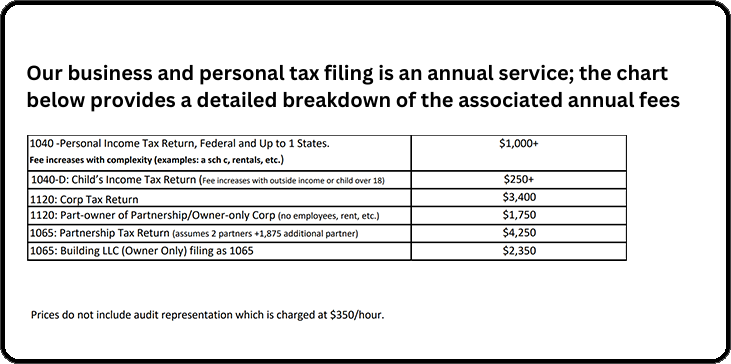Tune in to our podcast series: The Dental Board Room
Listen Now

When you look at the numbers, you’d think dentists would be busier than ever. Consumer spending on dental care is up. The economy, at least on paper, looks healthy enough. Yet, ask dentists across the country, and many will tell you the same thing: “Our chairs aren’t as full as they used to be.”
The ADA Health Policy Institute’s Q3 2025 report calls this mismatch the great paradox of dentistry: more money flowing through the system but fewer patients coming through the door. The data, and the stories behind it, explain why the sector feels off-balance despite growth on paper.
The headline numbers look encouraging. As of August 2025, dental spending rose 4 percent this year and sits 10 percent above pre-pandemic levels, even after adjusting for inflation.
Yet the share of dentists reporting they’re “not busy enough” jumped from 25 percent in Q2 to 35 percent in Q3. That’s not a minor mood swing; it’s a structural shift.
Dentists are experiencing a puzzling reality: the overall market is spending more, but those dollars are being spread unevenly. Revenue may be ticking upward, but many operatories still sit idle.
The growth looks smaller when you zoom out. Since 2020, total U.S. health spending has risen about 20 percent. Physician services increased 21 percent. Dental care? Only 10 percent.
That gap matters. It means dentistry is growing at roughly half the pace of the broader healthcare field. While consumers are visiting their doctors and urgent-care centers more often, they’re not prioritizing the dentist in the same way.
One simple metric captures this slowdown: appointment wait times. The average time for a new patient fell to just 12 days, a three-year low. A few years ago, it could take weeks to be seen. Now, in many offices, you could call today and get a slot next week.
It’s convenient for patients, but concerning for providers who measure success by full schedules and consistent case flow.
So how can spending rise while visits decline? The ADA report suggests several overlapping causes.
1. Fewer patients, bigger bills.
A smaller number of patients are scheduling visits, but they’re spending more per visit. Cosmetic and restorative cases are still strong, and those inflate total spending even when foot traffic falls.
2. Preventive care fatigue.
Routine cleanings and checkups, the bread and butter of most practices, are being postponed. Many patients delay maintenance care until something hurts.
3. Price sensitivity.
Fee increases, while necessary, may be deterring some households. As costs rise faster than insurance coverage, preventive visits are the first to go.
The result is an uneven flow of revenue. Practices with higher-value treatments might see stable income, while general practices feel a slowdown in everyday volume.
Underneath this paradox is a relentless rise in costs.
Prices for equipment and supplies are up 5 percent since the start of the year. Staff wages continue to climb faster than general inflation. Even with hiring staying flat, payroll expenses keep rising.
Faced with that squeeze, two-thirds of dentists (65.8 percent) raised their fees in 2025. The average hike across the fee schedule: 6.7 percent.
That move makes sense. Reimbursements from both public and private insurers are flat, and inflation eats away at margins. Raising fees becomes the only practical way to maintain profitability, but it adds another layer to the paradox. Higher prices can also suppress patient demand, especially for families already tightening budgets.
Insurance reimbursement is the silent weight dragging the industry down. PPO and public plan rates haven’t kept pace with inflation or the cost of delivering care.
Dentists describe it as a no-win situation:
More practices are considering leaving certain networks to regain pricing control, but it’s a gamble. The short-term drop in patient flow can sting, even if the long-term margins improve.
For many households, dental costs now compete with essentials like rent, groceries, and childcare. The ADA data shows affordability concerns are among dentists’ top frustrations.
When patients skip checkups, small problems grow into larger, costlier issues, a dynamic that hurts both patients and providers.
It’s also a perception issue. Some consumers still treat dentistry as discretionary, something that can be postponed without serious consequences. Over time, that mindset erodes preventive care habits and contributes to the very slowdown practices are reporting.
Despite all this, dentists aren’t sitting still. Nearly 41 percent invested in new software this year, focusing on practice-management platforms, scheduling tools, and patient-engagement systems that trim administrative waste.
Automation isn’t replacing human care; it’s giving teams back hours each week. Practices using better digital workflows report smoother collections, improved communication, and fewer gaps in the schedule.
These internal changes can’t offset macro-economic trends overnight, but they’re part of the longer-term strategy to stabilize margins without pricing out patients.
The “more spending, fewer patients” pattern is a warning signal, not a death sentence. It highlights the fragile balance between costs, insurance, and consumer behavior.
For the next year, the industry will likely keep hovering in this uneven state—neither contracting nor expanding dramatically. Practices that adapt now will weather it best.
Key strategies emerging from the data:
Dentistry’s paradox can be managed; it just requires sharper attention to numbers and a proactive mindset.
The dental economy isn’t broken; it’s adjusting. Inflation, workforce shortages, and changing consumer habits have created a moment of friction that feels uncomfortable but also instructive.
Dentists who stay nimble, focus on operational clarity, and maintain transparency with patients will find room to grow even in this slow-moving market.
The paradox reminds everyone that growth isn’t just about spending totals; it’s about how effectively each dollar translates into care delivered. And right now, that translation gap is the story to watch.
Catch the full episode of The Dental Boardroom Podcast where Wes and his team explore why growth on paper doesn’t always mean a busier schedule.
Wes knows what's best for dental practices. He's been doing this for a long time and he sees lots of practices. He can tell me how our practice is doing, and what we can do to increase our productivity. With past CPA's, there were no ideas. It was all coming from me, saying "I think I can do better, but I don't know how." I come in to meet with Wes and he says "You CAN do better, and I know how."
PracticeCFO is in hundreds of dental offices around the country. They know what numbers should look like. They know what percentages of payroll, rent and supplies should be, and they will hold you accountable to those numbers, which will really help you stick to your plan and your path of growth and savings. That is invaluable
Whenever something comes up, whether it's building or practice related and we weren't sure where the numbers would go, PracticeCFO has been instrumental in helping us figure that out. I can't say enough of how important that is - that it goes beyond that initial partnership. They make sure this business marriage works.
When I go home from work, I don't spend a whole lot of time stressing about what my books look like, or how much I owe in taxes. By using PracticeCFO, the burden of keeping track of a lot of the big financial numbers and metrics are taken off my plate.
PracticeCFO helped me develop a plan for the future. I have colleagues that work with other accountants that don't have a plan - they just look at the numbers of the practice and that's it. There's no plan for 10, 20 years from now. But with PracticeCFO, you get that. PracticeCFO makes you feel like you're they're only client.
(In reference to his practice sale) What could've been super stressful, wasn't! When picking John and Wes, it was from word of mouth recommendations and other people's experiences from the past that really did it for me. And it turns out that those recommendations were right on the line.
Wes knows the business side of dentistry. His comprehensive plan will organize your personal and professional finances so you can focus on taking care of patients. Massive ROI.
I can’t say enough good things about everyone at PracticeCFO. Everyone on the team is professional, organized, knowledgeable, helpful and kind. They also respond to emails and phone calls immediately and are always happy to help. They have helped me navigate year-to-year as a business owner. PracticeCFO gives me peace of mind that my business is in good hands.
I love Practice CFO! They have helped me obtain a practice and maintain a practice. They are incredible people who are on top of everything and make owning and running the business portion of a practice easy. They couldn’t be better for my business and my sanity. They have every detail of the business and taxes taken care of where all I have to do is show up and follow their easy steps to success!
Practice CFO has the best tools I’ve seen for personal tax and financial planning in addition to top-tier corporate tax and accounting services. I have been very pleased with the level of quality service. They manage my monthly bookkeeping and accounts payable. It is a great system and saves me a ton of time, and it allows us to have monthly financial statements within a week of month end.

This will close in 0 seconds